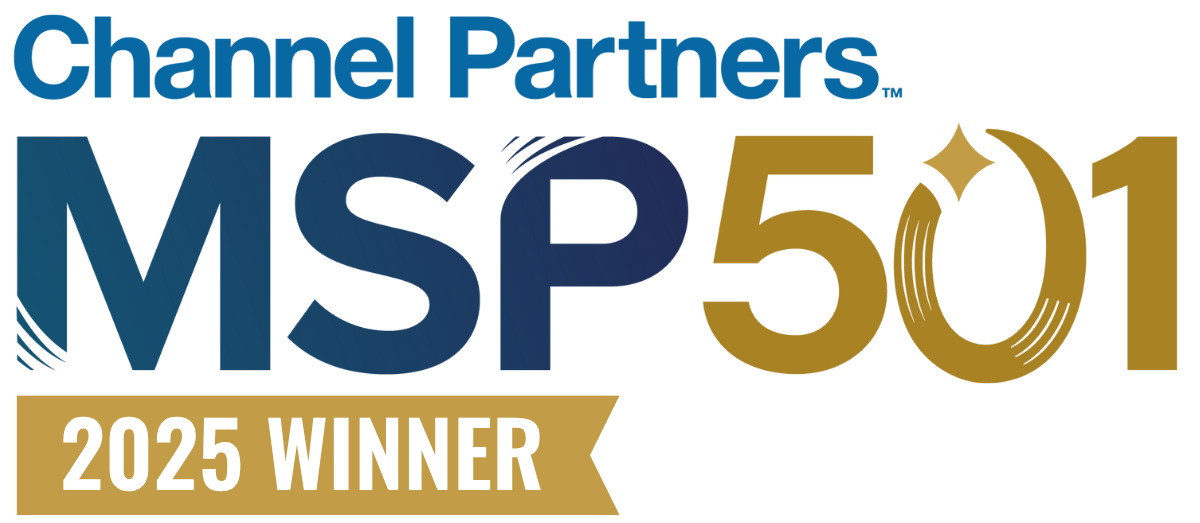Small businesses must continuously invest in the latest technology to sustain growth and maintain a competitive advantage in often saturated markets.
Investing in cutting-edge business equipment can be expensive, but Section 179 of the IRS Tax Code provides a way to make computer networking and imaging equipment, and other large-scale purchases, more affordable.
The landscape for equipment deductions changed dramatically in 2025. The One Big Beautiful Bill Act (OBBBA), signed into law this summer, doubled the Section 179 deduction limits and permanently restored 100% bonus depreciation—creating unprecedented opportunities for businesses to invest while maximizing tax savings.
Eligible businesses can take advantage of these expanded tax benefits by deducting qualifying business equipment and software, resulting in substantial savings during tax time.
Let's explore the Section 179 tax deduction and discuss how your organization can benefit from these enhanced provisions.
What Is the Section 179 Tax Deduction?
Section 179 deduction is a tax incentive available to U.S. businesses. It allows them to deduct the full purchase price of qualifying equipment or software purchased or financed during the tax year. Given the structure of the limits, Section 179 deductions aid small and medium-sized businesses most effectively.
The deduction is designed to encourage small businesses to invest in themselves by purchasing needed equipment and software.
Rather than spreading deductions over multiple years through standard depreciation, Section 179 allows businesses to write off the full cost immediately in the year the asset is placed in service—providing substantial upfront tax relief and improved cash flow.
Keep in mind that Section 179 cannot exceed your business's taxable income for the year. If your business generates $750,000 in taxable income in 2025, your Section 179 deduction is capped at $750,000, even if you purchase qualifying equipment exceeding that amount. Any unused Section 179 deduction can be carried forward to future tax years.
This income limitation is a key difference from bonus depreciation, which has no such restriction and can be used to create a net operating loss.
How OBBBA Changed Section 179 in 2025
The passage of OBBBA represents the most significant expansion of Section 179 in years. These changes took effect for property placed in service in taxable years beginning after December 31, 2024.
Doubled Deduction Limits
OBBBA more than doubled the maximum Section 179 deduction from $1.22 million in 2024 to $2.5 million for 2025. This dramatic increase allows businesses to immediately expense significantly more equipment in a single tax year, making larger-scale technology upgrades and equipment investments far more accessible.
New Phase-Out Structure
The phase-out threshold—the point at which your deduction begins to reduce—increased from $3.05 million to $4 million. The deduction reduces dollar-for-dollar once total equipment purchases exceed this threshold. It phases out completely when total purchases reach $6.5 million.
For example, if a business purchases $5 million in qualifying equipment, it exceeds the threshold by $1 million ($5M - $4M). Their maximum Section 179 deduction would be reduced to $1.5 million ($2.5M - $1M overage).
Permanent Status with Inflation Indexing
Perhaps most significantly, OBBBA made these enhanced limits permanent. Both the $2.5 million deduction cap and $4 million phase-out threshold will be indexed for inflation beginning in 2026, providing long-term certainty for business tax planning.
How Do Section 179 Deductions Aid Small Businesses?
The Section 179 tax deduction allows businesses to immediately write off the full purchase price of qualifying equipment or software in the year it was purchased and put into service. This means you don't have to wait for depreciation over several years.
By deducting the full cost of your office equipment or software, you reduce the overall amount of taxable income for your business. This leads to significant tax savings, freeing up cash that can be reinvested back into operations.
One of the major benefits of Section 179 is that it encourages growth and scalability by making it more financially feasible to purchase equipment and technology that will improve efficiency and productivity. Here are a few ways your business can use Section 179 to improve or scale operations:
- Acquire a production printer to meet increasing client demands
- Replace multiple legacy printers with one versatile color multifunction printer
- Invest in cybersecurity software to safeguard your data
- Upgrade your entire print management and workflow automation technology
What Equipment Qualifies for Section 179?
To be eligible for the Section 179 tax deduction, property must meet specific criteria and be used more than 50% of the time for business purposes.
Qualifying property for Section 179 includes:
Tangible Personal Property
This category includes:
- Office furniture
- Tools and equipment
- Computers and peripherals
- Manufacturing machinery.
The property must be physically movable and used in business operations.
Office Equipment and Technology
Qualifying equipment includes machines used in business operations, computers and networking equipment, and software used for business purposes. Important note: The assets must be "new to you" and acquired through purchase or Section 179 Qualified Financing from an unrelated party.
Printers, Copiers, and Document Management Systems
Office printers and multifunction devices, production printing equipment, and document scanning and management systems all qualify for Section 179. These investments can significantly improve operational efficiency while providing immediate tax benefits.
Vehicles and the 6,000-Pound Rule
Vehicles that qualify include those designed to carry more than nine passengers (such as shuttle vans), vehicles with a cargo area of at least six feet in length (certain trucks and vans), and business vehicles with a gross vehicle weight exceeding 6,000 lbs.
For heavy SUVs, trucks, or vans over 6,000 lbs but under 14,000 lbs GVWR, the Section 179 deduction is capped at $31,300 for 2025. Bonus depreciation can cover the remainder of the cost.
Used Equipment Eligibility Under OBBBA
A critical feature of Section 179 is that used equipment qualifies, as long as it's new to your business.
Under OBBBA, both Section 179 and the restored 100% bonus depreciation apply to used property, provided it wasn't previously used by the purchaser or received from a related party. This opens substantial opportunities for businesses to acquire pre-owned equipment at lower costs while still capturing full tax benefits.
Download Info Sheet >
Improvements to Non-Residential Buildings
Certain improvements made to non-residential property after it was first placed in service qualify, including roofing, HVAC systems, fire suppression and alarm systems, and security systems (including video surveillance).
Off-the-Shelf Software
Software qualifies if it's purchased and put into use in the current tax year, available for purchase by the general public (not custom-made), and used for business purposes.
Examples of qualifying software include:
- Business Operations: Billing, document management
- Security: Cybersecurity
- Productivity: Office suites, project management
- Industry-Specific: Point of sale, inventory management
Additional Considerations
Partial Business Use: Deductions are based on the percentage of time the equipment is used for business purposes. For example, if you purchase a $10,000 multifunction printer and use it 70% for business and 30% for personal purposes, you can claim a $7,000 Section 179 deduction. The IRS requires you to maintain accurate usage logs to substantiate your business-use percentage, especially for equipment that serves both business and personal functions.
Listed Property: Items that can be used for both personal and business purposes (e.g., cameras, laptops, smartphones) have stricter record-keeping requirements. The IRS classifies these as "listed property" because of their dual-use potential, requiring businesses to maintain detailed logs documenting business versus personal use. If business use falls below 50%, the property doesn't qualify for Section 179, and you must switch to standard depreciation methods.
Remember to consult with a tax professional for specific advice related to your individual situation, as tax laws and regulations may change.
Pro Tip
2025 Section 179 Deduction Calculator
Use this helpful tool to estimate your potential tax savings. Learn More →
How to Claim Your Section 179 Deduction
While acquiring a Section 179 tax deduction can be straightforward, following these steps will help ensure you maximize your benefits and comply with IRS requirements:
1. Identify Qualifying Assets
Carefully review your business purchases to determine which assets qualify for the Section 179 tax deduction. Remember that eligible property must be tangible personal property used for business more than 50% of the time, acquired for business use, and placed in service during the tax year.
"Placed in service" means the asset is ready and available for its intended use in your business—not just delivered or paid for.
2. Calculate Your Deduction
Determine your business's taxable income and the total cost of qualifying equipment. Keep in mind: The maximum deduction for 2025 is $2.5 million, the deduction begins to phase out when equipment costs exceed $4 million, and your Section 179 deduction cannot exceed your business's taxable income.
3. Maintain Detailed Records
Throughout the tax year, keep meticulous records of all purchases, including date of purchase, date placed in service, cost of the asset, description of the property, and percentage of business use.
4. Complete IRS Form 4562
When filing your taxes, you'll need to fill out Form 4562 (Depreciation and Amortization). Part I is specifically for Section 179 tax deductions. Provide detailed information about each qualifying asset and calculate your total Section 179 tax deduction.
5. Consider Bonus Depreciation for Remaining Costs
For qualified property acquired and placed in service after January 19, 2025, you can apply 100% bonus depreciation to costs exceeding your Section 179 limit. This combination strategy, when planned carefully, can allow you to fully expense substantial equipment purchases in the year they're placed in service.
6. Consult a Tax Professional
Given the complexities of tax law and OBBBA's recent changes, consider working with a qualified tax advisor. They can ensure you're maximizing your deductions while remaining compliant and help you stay informed about any updates to Section 179 rules.
By following these steps and maintaining thorough documentation, you can confidently claim your Section 179 deductions and potentially reduce your tax liability significantly.
Maximize Your 2025 Tax Savings With SymQuest
If you've observed that your business equipment is no longer meeting the demands of your organization, it's time to upgrade. The Section 179 tax deduction—dramatically expanded by OBBBA in 2025—presents a golden opportunity for small businesses to invest in cutting-edge technologies that will keep them competitive and unlock their full potential for success.
Whether you're upgrading aging equipment or scaling operations with new technology, the combination of Section 179 and bonus depreciation can significantly reduce the after-tax cost of your investment. Our solutions help you modernize operations while maximizing tax savings—improving both efficiency and your bottom line.
Ready to take advantage of these unprecedented deductions before year-end? Contact the specialists at SymQuest to discuss which equipment solutions will have the biggest impact on your operation.





